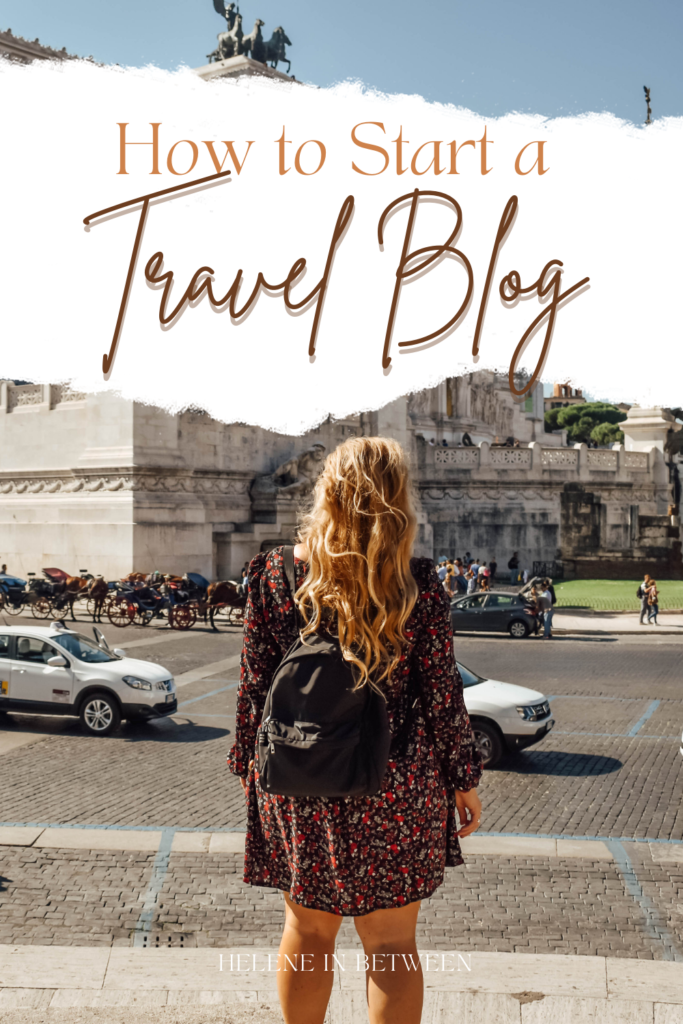Ready to start a travel blog and make money?! Do you love sharing your travel experiences and tips with others? If so, starting a travel blog could be the perfect way to showcase your adventures and connect with like-minded people around the world. In this ultimate guide, we’ll walk you through the step-by-step process of creating a successful travel blog, from choosing a niche and creating content to promoting your blog and monetizing your traffic.
Before we get into this, I might be a little bit different, in that I don’t believe in niches. Consider a singer or musician, they don’t perform the identical composition every time. Despite being in the same genre, their music may differ in tempo or subject matter. A blog follows a similar principle.
My Story
I never planned on becoming a travel blogger. In fact, I didn’t even consider it until I broke my ankle while rock climbing and found myself stuck on the couch for months. With nothing else to do, I started writing about my past travels in Europe, recounting the adventures and mishaps that had made those trips so memorable.
At first, it was just a way to pass the time and distract myself from the frustration of being stuck inside. But as I continued to write and share my stories, I started to realize that there was something special about the connections I was making with readers from around the world.
As I recovered and returned to my day job, I kept up the blog on the side, sharing my new travel experiences and tips with readers. And then, something unexpected happened: the blog started to gain traction. I found myself with more and more readers, and eventually, I realized that I had stumbled upon a new career path.
I’ve been travel blogging full time for 8 years now, and it has been an incredible journey. Blogging has allowed me to explore the world and share my experiences with a global audience. It has also helped me to build a personal brand and establish myself as a thought leader in the travel industry.
Through my blog, I’ve been able to connect with other bloggers and industry professionals, which has led to exciting opportunities and collaborations. Blogging has even helped me to move abroad and experience new cultures firsthand.
Now, my husband even works with me on my blog, which has been a wonderful way to strengthen our relationship and share our passion for travel with each other and our readers. Together, we create content, share our experiences, and inspire others to explore the world.
Travel blogging has truly been a dream come true for me, and I feel grateful every day for the opportunity to pursue my passion and share it with others. I’m excited to see where this journey will take me next, and to continue to grow my personal brand and inspire others to pursue their own travel dreams.
Today, my travel blog is my full-time job, and I’m grateful every day for that broken ankle that led me down this unexpected path. In this guide, I’ll share everything I’ve learned about starting a successful travel blog, from choosing a niche and creating content to promoting your blog and monetizing your traffic.
Read more: What I Wish I Knew Before Becoming a Full Time Blogger
What is a Blog?
Before we dive into the details of starting a travel blog, let’s first define what a blog is. A blog is a website where an individual or group of individuals regularly post content about a specific topic or niche. The content can be in the form of written articles, photos, videos, or a combination of these. In the case of a travel blog, the topic is obviously travel, and the focus is on sharing personal experiences, advice, and tips related to traveling.

Starting a travel blog is an exciting and rewarding experience that allows you to share your travel experiences with others, connect with fellow travelers, and potentially make money doing what you love. However, it’s important to understand that creating a successful travel blog takes time, effort, and dedication. It’s not a get-rich-quick scheme or a way to travel for free, but rather a platform to showcase your creativity and passion for travel.
Picking Your Passion (NOTE, not a Niche)
Let me say, I’m not a fan of niches.
Think of a musical artist, they don’t play the same song every time. They might be within the same genre, but their music might be fast or slow, or talk about different themes. It’s the same with a blog!
Read More: Is It Okay to NOT Have a Niche Blog?

The first step in starting a successful travel blog is to choose focus for your blog. While you can certainly write about all aspects of travel, it’s often more effective to specialize in your style of travel or writing. This will help you stand out from the thousands of other travel blogs out there and attract a dedicated audience.
Some examples of travel blog focus include:
Adventure travel
Luxury travel
Budget travel
Family travel
Solo travel
Food and drink travel
When choosing your focus, consider your own travel experiences and interests, as well as the potential audience you want to attract. Keep in mind that a narrow focus can actually help you attract a larger audience, as you’ll be seen as an expert in that specific area.
FREE EBOOK! 14 Days to A Better Blog

Free, 32 Page eBook to help you grow your blog.
Coming up with a unique and catchy name for your blog is an important part of building your personal brand. Here are some examples of ideas for blog names:
Wanderlust Chronicles
Nomadic Nourishment
Adventures In Wanderland
Roaming Roots
The Journey Junkie
A Wandering Soul
The Traveling Gypsy
Roaming Roadtripper
The Global Explorer
The Wandering Writer
Journey To Bliss
Lost In Wanderlust
The Traveling Mindset
Far From Home
The Wandering Dreamer
Gypsy Soul Journeys
Travels With My Tribe
Let’s Get Lost
The Nomadic Life
Travel Tales and Tips.
Remember to choose a name that is easy to remember, represents your brand and niche, and is not too difficult to spell or pronounce.
Another important factor to consider when naming your blog is to choose a name that can grow with you and adapt to changes in your life. For example, using your name as your blog name can allow you to pivot your focus as your interests and experiences evolve.
If you choose to use your name as your blog name, consider including a tagline or subtitle that reflects your focus or topic. This can help to create a clear and memorable brand that resonates with your audience.
Using your name also adds a personal touch to your blog and can help to establish a deeper connection with your readers. It can also make it easier for people to find and recognize you across different platforms.
Overall, choosing a blog name that can grow with you and reflect your personal brand is key to building a successful and sustainable blog. So take the time to brainstorm and choose a name that resonates with you and your audience, and that can adapt to changes in your life and career.
Read More: Why You Need to Start a Blog
Setting up Your Blog
Once you’ve chosen your focus, it’s time to set up your travel blog. This involves choosing a domain name, hosting provider, and blogging platform. Here’s a quick overview of each step:
Choose a domain name
Your domain name is the address of your blog on the internet (e.g. www.yourblogname.com). Choose a domain name that’s easy to remember, relevant to your focus, and available to register. You can check the availability of domain names using a domain registrar such as Namecheap or GoDaddy.
Choose a hosting provider
A hosting provider is a service that stores your website files and makes them accessible on the internet. There are many hosting providers to choose from, but some of the most popular options for bloggers include Bluehost, SiteGround, and HostGator. When choosing a hosting provider, consider factors such as speed, reliability, and customer support. I recommend Siteground and I’ll show you how I use it below!
Choose a blogging platform
A blogging platform is the software you’ll use to create and publish your blog posts. Some popular options for travel bloggers include WordPress, Squarespace, and Wix. WordPress is the most popular choice, and it’s also the most flexible and customizable platform. It has a vast array of themes, plugins, and widgets that allow you to create a professional-looking blog without any coding knowledge. I highly recommend WordPress and break down why here!
Choose your site language and a theme. You can choose a theme provided, or you can upload one later. I use the Genesis Framework and I like the themes from Restored 316.
FREE EBOOK! 14 Days to A Better Blog

Free, 32 Page eBook to help you grow your blog.
Setting up your blog in Siteground
SiteGround is a popular web hosting platform that provides reliable and affordable hosting for bloggers and content creators. Here’s how to get set up in SiteGround:
1. Choose a Plan
SiteGround offers several hosting plans, including shared hosting, cloud hosting, and dedicated hosting. Choose the plan that best fits your needs and budget.
For most bloggers and content creators, shared hosting is the best option, as it provides a good balance between affordability and performance. SiteGround’s shared hosting plans start at $6.99 per month.
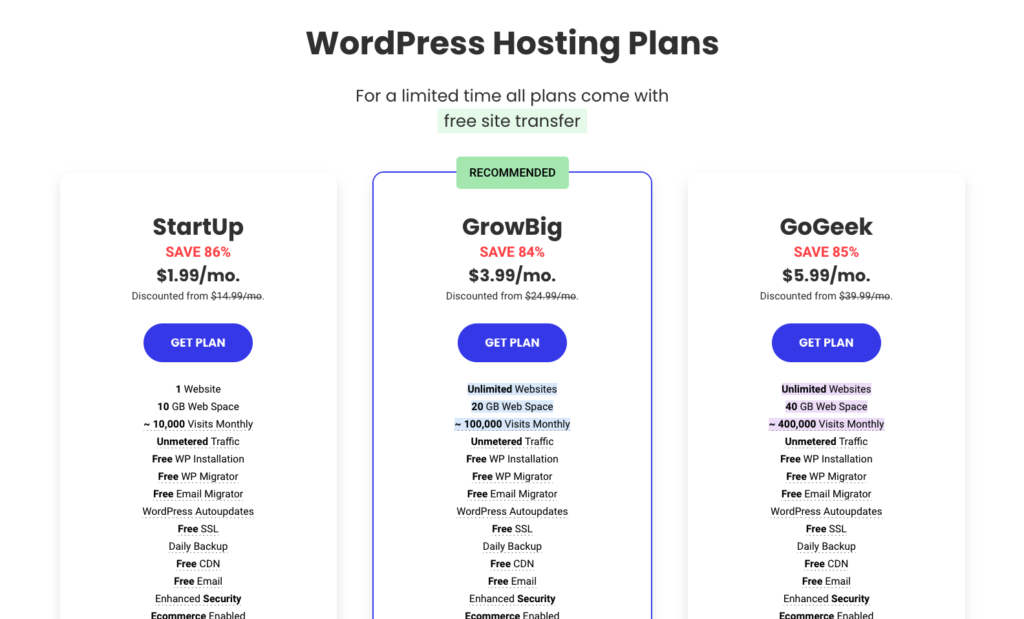
2. Choose a Domain Name
If you don’t already have a domain name, you can purchase one through SiteGround. Enter your desired domain name and check if it’s available. If it’s not available, SiteGround will provide suggestions for alternative domain names.
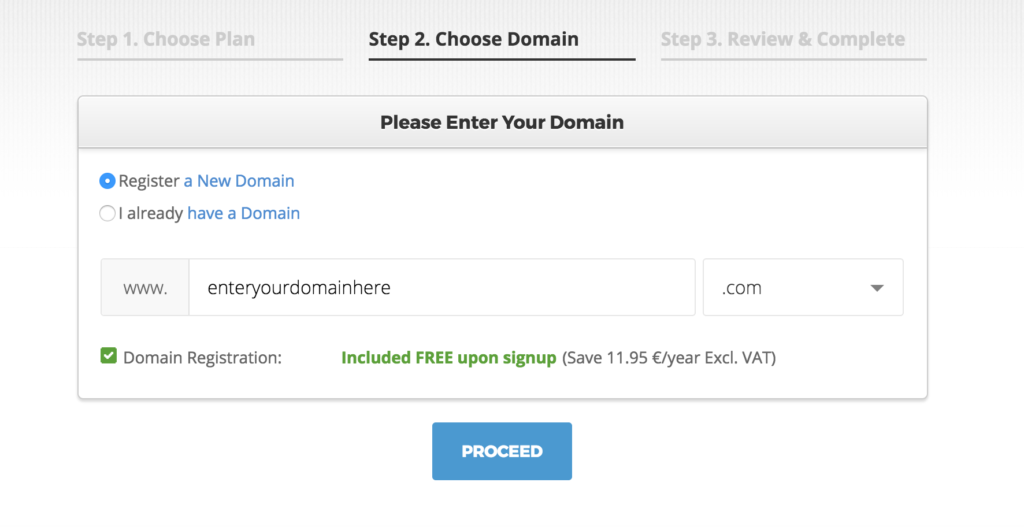
3. Complete the Sign-Up Process
Once you’ve chosen a plan and domain name, complete the sign-up process by entering your personal and payment information. SiteGround offers several payment options, including credit card and PayPal.
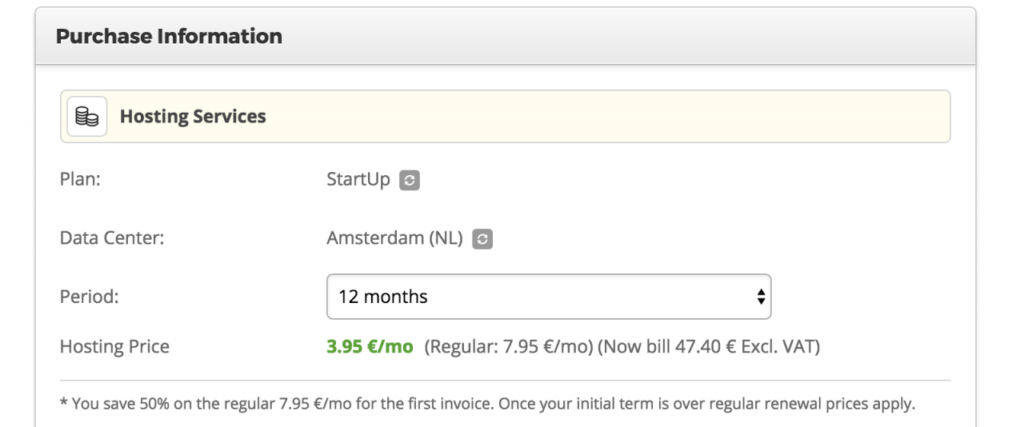
4. Install WordPress
SiteGround makes it easy to install WordPress, the most popular content management system for bloggers and content creators. From your SiteGround dashboard, click on the “My Accounts” tab and then click on “Go to cPanel.”
In cPanel, click on the “WordPress Installer” icon and follow the prompts to install WordPress on your domain. Once the installation is complete, you can log in to your WordPress dashboard and start customizing your site.
5. Customize Your Site
With WordPress installed, you can customize your site by choosing a theme, installing plugins, and creating content. SiteGround offers a variety of resources and tutorials to help you get started, including a knowledge base, video tutorials, and a support forum.
Make sure to add important pages such as your about page, how to contact you, even popular posts. It’s helpful to have a table of contents so that your readers can always find what they need.
Getting set up in SiteGround is a straightforward process that can be completed in just a few steps. Choose a plan, choose a domain name, complete the sign-up process, install WordPress, and customize your site. With SiteGround’s reliable hosting and helpful resources, you’ll be well on your way to creating a successful blog or content site.
Designing Your Site
Creating a visually appealing blog design is crucial for attracting and retaining readers. One way to create a professional-looking blog design is by using graphics from tools like Canva or Creative Market.
Canva is a popular graphic design platform that offers a range of templates and design tools for bloggers and content creators. With Canva, you can create custom graphics, logos, and social media images that match your brand’s aesthetic. Canva offers a range of features, including pre-designed templates, custom fonts, and thousands of graphics and images that can be used to make your blog stand out. Additionally, Canva’s easy-to-use interface means that even those without graphic design experience can create beautiful, professional-looking designs.
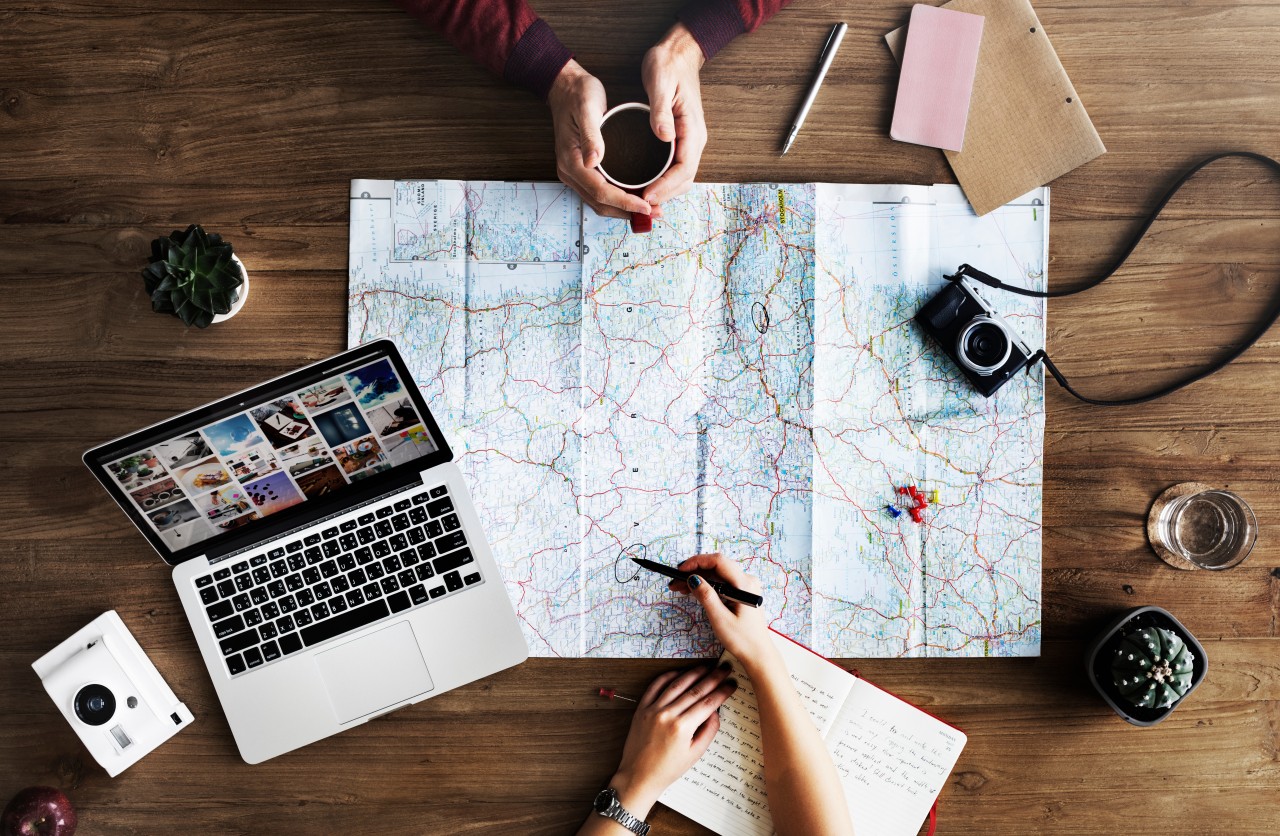
Creative Market is a marketplace for creative assets, including blog themes and design elements. You can find pre-designed templates, fonts, and graphics that can be customized to fit your blog’s style. Creative Market offers a range of options for bloggers and content creators, including themes for popular blogging platforms such as WordPress and Squarespace. The platform also offers high-quality graphics and design elements, making it easy to create a visually stunning blog.
Whether you choose to use Canva or Creative Market, incorporating high-quality graphics into your blog design can help elevate your content and create a more engaging reader experience. It’s important to choose graphics that align with your brand’s aesthetic and to use them consistently throughout your blog. By investing in a well-designed blog, you can attract more readers and create a memorable brand that stands out in a crowded online space.
You can choose a theme provided, or you can upload one later. I use the Genesis Framework and I like the themes from Restored 316.
Using WordPress
The WordPress dashboard is the control panel for your WordPress site, where you can manage your content, settings, and plugins. Here’s an overview of the WordPress dashboard:

1. Home Screen
The home screen of the WordPress dashboard provides an overview of your site’s activity, including recent comments, updates, and statistics. It also includes shortcuts to common tasks, such as creating a new post or page.
2. Posts and Pages
The Posts and Pages sections of the WordPress dashboard allow you to create and manage your blog posts and static pages. You can create new posts or pages, edit existing ones, and organize them into categories and tags.
3. Media Library
The Media Library section of the WordPress dashboard allows you to manage the images, videos, and other media files that you use on your site. You can upload new files, organize them into folders, and add them to your posts and pages.
4. Appearance
The Appearance section of the WordPress dashboard allows you to customize the look and feel of your site by changing the theme, customizing the header and footer, and creating menus and widgets.
5. Plugins
The Plugins section of the WordPress dashboard allows you to install, activate, and manage the plugins that add functionality to your site. You can search for new plugins, update existing ones, and configure their settings.
6. Settings
The Settings section of the WordPress dashboard allows you to configure the basic settings for your site, such as the site title and description, permalink structure, and email notifications.
The WordPress dashboard is the control center for your WordPress site, where you can manage your content, settings, and plugins. By familiarizing yourself with the different sections of the dashboard, you can efficiently manage your site and create a successful and sustainable blog that resonates with your audience.
FREE EBOOK! 14 Days to A Better Blog

Free, 32 Page eBook to help you grow your blog.
Creating High-Quality Content
Now that you’ve set up your travel blog, it’s time to start creating content. The key to creating high-quality content is to focus on providing value to your readers. Share your personal experiences, tips, and advice that will help them plan their own travels. Here are some tips for creating engaging and informative content:
Write with your audience in mind
Think about your target audience when writing your blog posts. What questions do they have about travel? What are their pain points? What kind of information do they find most valuable? Write your blog posts with the intention of answering these questions and providing useful information to your readers.
Use visuals
Include photos and videos in your blog posts to make them more visually appealing and engaging. Show off the beautiful destinations you’ve visited, the delicious food you’ve eaten, and the fun activities you’ve done. Visuals can also help break up long blocks of text and make your blog posts easier to read.

Optimize for SEO
Search engine optimization (SEO) is the process of optimizing your blog for search engines like Google. This can help your blog rank higher in search results, which can lead to more traffic and potential monetization opportunities. Some basic SEO tips include using relevant keywords in your blog post titles and content, including meta descriptions and alt tags for images, and linking to other relevant content on your blog.
Be consistent
Consistency is key when it comes to blogging. Aim to publish new blog posts on a regular basis, whether that’s once a week, twice a month, or another schedule that works for you. This will help keep your readers engaged and coming back for more.
Creating a Personal Brand
Using Instagram and TikTok can be a powerful way to create a personal brand and promote your blog. Here are some tips for using these platforms to promote your blog and create a cohesive personal brand:
1. Share Blog Posts on Instagram and TikTok
Sharing your blog posts on Instagram and TikTok is a great way to promote your blog and drive traffic to your website. Create eye-catching graphics or videos that highlight the main points of your blog post and include a call-to-action to encourage followers to read the full post.
Make sure to also include a link to your blog in your Instagram and TikTok bios to make it easy for followers to access your website.
2. Share Behind-the-Scenes Content
Sharing behind-the-scenes content on Instagram and TikTok can help to humanize your brand and create a stronger connection with your audience. Showcasing the process of creating blog posts, sharing personal insights, or giving a glimpse into your daily life can help to establish your personal brand and create a loyal following.

3. Use Consistent Branding
Consistent branding is key to creating a strong personal brand across multiple platforms. Use the same profile photo, colors, and fonts across your blog, Instagram, and TikTok to create a cohesive look and feel.
Make sure to also use the same voice and messaging across all platforms to reinforce your personal brand and create a recognizable identity. I’m a big fan of finding your voice for your blog.
4. Engage with Your Audience
Engaging with your audience on Instagram and TikTok is crucial for building a personal brand and creating a loyal following. Respond to comments and direct messages, ask for feedback, and use polls and quizzes to encourage interaction.
Make sure to also show appreciation for your followers by reposting user-generated content or featuring them in your stories or posts.
2. Create Engaging Content
On Instagram and TikTok, visual content is key. Invest in high-quality photography and videography equipment, and use editing tools to make your content stand out.
Make sure to also use captions and hashtags to provide context and make your content discoverable. Engage with your followers by responding to comments and direct messages, and consider hosting Instagram Live or TikTok Live sessions to connect with your audience in real-time.
5. Collaborate with Other Creators
Collaborating with other Instagram and TikTok creators can help you grow your audience and reach new followers. Consider teaming up with other creators for sponsored posts, giveaways, or social media challenges.
When collaborating, make sure to choose creators whose content and values align with yours. It’s also important to be transparent with your audience about sponsored content.
6. Be Consistent
Consistency is key to building a personal brand on Instagram and TikTok. Post regularly and at consistent intervals, and use Instagram and TikTok’s analytics tools to track your engagement and adjust your content strategy as needed.
Make sure to also maintain a consistent aesthetic and voice across your posts, stories, and profile. This helps to establish your personal brand and make your content recognizable to your followers.
Using Instagram and TikTok can be a powerful way to promote your blog and create a personal brand. Share blog posts, share behind-the-scenes content, use consistent branding, and engage with your audience to create a strong and memorable personal brand that resonates with your followers. With dedication and effort, you can use these platforms to grow your audience and establish yourself as a thought leader in your focus.
FREE EBOOK! 14 Days to A Better Blog

Free, 32 Page eBook to help you grow your blog.
Promoting Your Blog
Creating great content is only half the battle. To build a successful travel blog, you also need to promote it effectively. Here are some ways to get your blog in front of more people:
Use social media
Social media platforms like Facebook, Instagram, and Twitter can be great ways to promote your blog and connect with your audience. Share your blog posts on your social media channels and engage with your followers by responding to comments and messages.
Network with other bloggers
Connecting with other travel bloggers can help you build relationships, share ideas, and potentially drive traffic to your blog. Look for other bloggers in your focus and reach out to them through social media or email.
Guest post on other blogs
Guest posting is the process of writing a blog post for another website or blog. This can help you reach a new audience and build backlinks to your own blog, which can improve your SEO.
Here are some key ways to grow your blog:
Making Money Blogging
Once you’ve built up a dedicated audience for your travel blog, there are a number of ways to monetize your traffic. Here are some popular methods:
1. Affiliate Marketing
Affiliate marketing is a method of earning commission by promoting products or services on your blog. You can include affiliate links in your blog posts and earn a commission when someone makes a purchase through your link. Many travel bloggers use affiliate marketing to monetize their blogs, promoting everything from travel gear to tours and accommodation.
Some popular affiliate marketing programs for travel bloggers include Amazon Associates, Booking.com Affiliate Program, and TripAdvisor Affiliate Program. To be successful with affiliate marketing, it’s important to only promote products or services that you believe in and that are relevant to your audience.
Affiliate marketing can be a lucrative way to earn income as a blogger or content creator. The amount you can earn depends on several factors, such as the commission rate, the price of the products or services you promote, and your audience’s interest in those products or services.
For example, if you promote a travel product that pays a 10% commission and costs $1,000, you could earn $100 per sale. If you make 10 sales per month, you could earn $1,000 per month. Keep in mind that it takes time and effort to build up a dedicated audience that trusts your recommendations.
2. Sponsored Content
Sponsored content is when a brand pays you to create a blog post or social media post promoting their product or service. This can be a lucrative way to earn income from your blog, but it’s important to disclose any sponsored content to your readers.
When considering sponsored content opportunities, make sure to only work with brands that align with your values and that will provide value to your readers. You don’t want to sacrifice your authenticity or credibility for a quick paycheck.
Sponsored content can be a lucrative way to earn income, but the amount you can earn varies widely depending on the brand and the scope of the project. Some brands might pay a flat fee for a blog post or social media post, while others might offer a fee plus free products or experiences.
For example, a hotel might offer you a free stay in exchange for a blog post or social media post promoting their property. Or, a travel gear company might pay you $500 to write a review of their product on your blog.
Lots of travel bloggers and content creators work with tourism boards so here’s a deeper look at that.
Working With Tourism Boards and Traveling
Working with tourism boards can be a great way to earn income and gain exposure for your travel blog or content. Here are some tips for working with tourism boards:
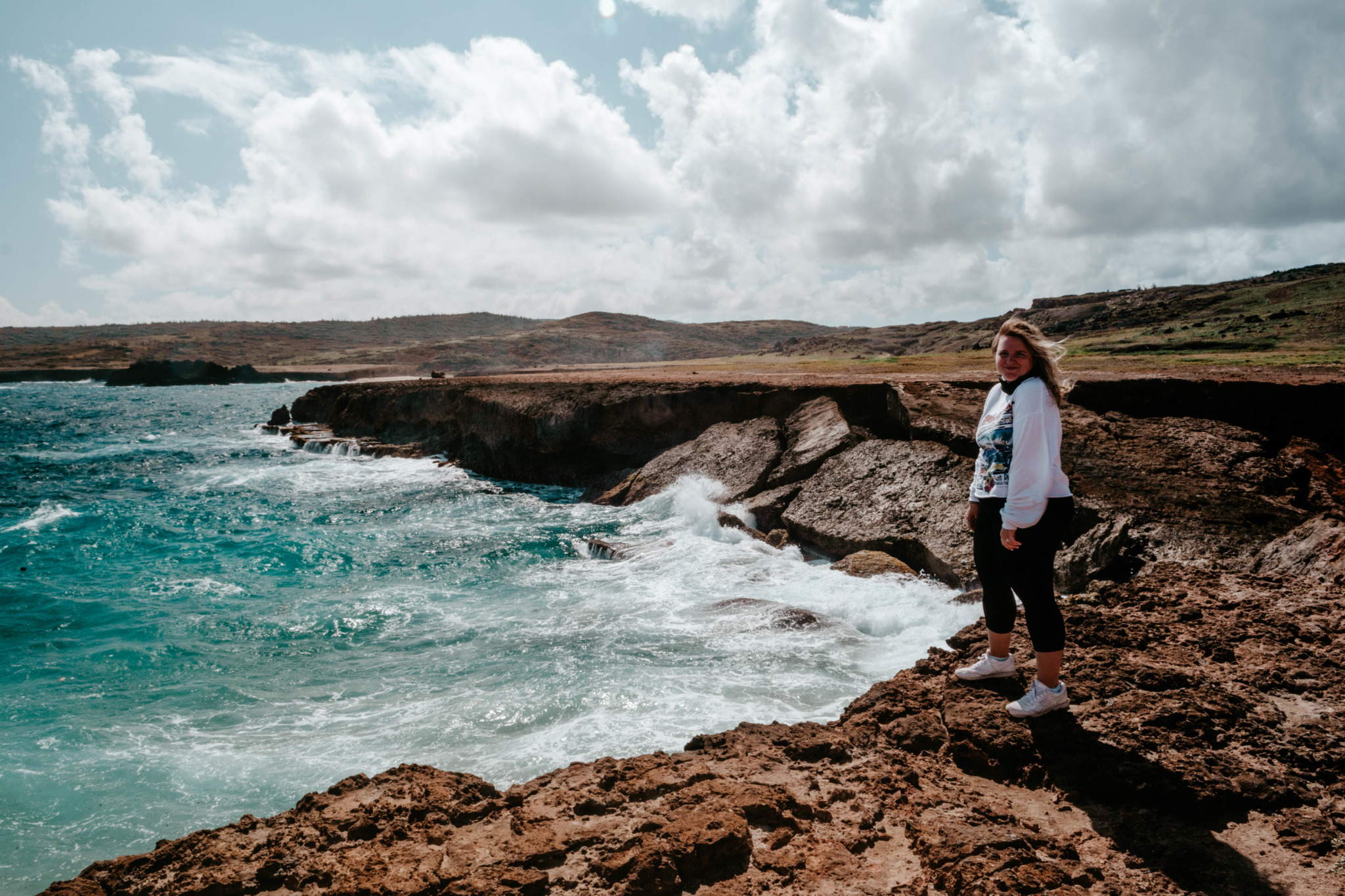
1. Pitching
To work with a tourism board, you typically need to pitch your ideas and credentials. Start by researching the tourism board’s website and social media channels to get an idea of their current campaigns and initiatives. Then, craft a personalized pitch that outlines how you can help them achieve their goals.
Make sure to highlight your relevant experience and provide examples of your work. It’s also helpful to include metrics like your blog traffic and social media following.
2. Creating Content
Once you’ve secured a partnership with a tourism board, it’s important to create high-quality content that meets their needs and goals. This might include blog posts, social media posts, or video content.
Make sure to understand the tourism board’s brand and messaging guidelines, and work with them to create content that aligns with their goals. It’s also important to disclose any sponsored content to your readers and followers.
3. Providing Value
Working with a tourism board is a two-way street, and it’s important to provide value to them in addition to earning income for yourself. Make sure to go above and beyond in your content creation and promotion to help the tourism board achieve their goals.
For example, you might create a blog post that not only promotes a destination but also provides useful tips and recommendations for travelers. Or, you might share your content on social media and encourage your followers to engage with the tourism board’s social media channels.
4. Building Relationships
Building strong relationships with tourism boards can lead to long-term partnerships and repeat business. Make sure to communicate clearly and professionally, and be open to feedback and constructive criticism.
It’s also important to network with other travel bloggers and content creators, as they may have connections with tourism boards and be able to provide referrals or introductions.
Working with tourism boards can be a great way to earn income and gain exposure for your travel blog or content. It’s important to pitch your ideas and credentials, create high-quality content that aligns with the tourism board’s goals, provide value, and build strong relationships. With dedication and effort, working with tourism boards can lead to exciting opportunities and collaborations.
3. Advertising
Placing ads on your blog can also be a way to earn income. Popular ad networks for bloggers include Google AdSense and Media.net. The amount of money you can earn from advertising depends on factors such as your blog’s traffic, the number of ads you display, and the ad network you use.
It’s important to strike a balance between earning income from ads and providing a positive user experience for your readers. Too many ads can be distracting and take away from the quality of your content.
Ad revenue is typically the most passive way to earn income as a blogger or content creator. Advertisers pay you based on the number of impressions or clicks your ads receive. The amount you can earn varies widely depending on your traffic and the type of ads you display.
For example, if you have 100,000 monthly pageviews and use a popular ad network like Google AdSense, you might earn anywhere from $500 to $2,000 per month. Keep in mind that ad revenue can fluctuate based on factors like seasonality and ad block usage.
4. Digital Products
Creating and selling digital products can also be a way to monetize your travel blog. These products can include e-books, courses, and travel guides. If you have expertise in a particular area of travel, such as budget travel or solo travel, you can create a digital product that provides value to your readers.
When creating digital products, it’s important to ensure that they are high-quality and provide value to your audience. Don’t just create a product for the sake of making money; make sure it’s something that your readers will find useful and relevant.
The amount you can earn from digital products depends on several factors, such as the price of the product, the size of your audience, and the demand for that type of product. Some bloggers and content creators make a full-time income from selling digital products like e-books, courses, and printables.
For example, if you sell an e-book for $50 and make 50 sales per month, you could earn $2,500 per month. Keep in mind that creating high-quality digital products takes time and effort, and it’s important to ensure that they provide value to your audience.
5. Freelance Writing or Photography
If you have strong writing or photography skills, you can also earn money by freelancing for other travel publications or websites. This can be a great way to build your portfolio and make connections in the industry.
To find freelance opportunities, reach out to travel publications and websites that align with your niche and style. Make sure to have a strong portfolio and be open to feedback and constructive criticism.
Freelancing can be a way to earn income as a blogger or content creator, but the amount you can earn depends on several factors, such as your expertise, the type of work you do, and your hourly rate. Some bloggers and content creators make a full-time income from freelancing for other publications or websites.
For example, if you charge $100 per hour for writing or photography work and work 20 hours per week, you could earn $8,000 per month. Keep in mind that freelancing requires time management skills and the ability to balance multiple clients and projects.
Making money from a travel blog takes time, effort, and dedication. It’s important to focus on providing value to your readers and building a loyal audience before monetizing your blog. Once you have a dedicated following, there are several ways to earn income from your blog, including affiliate marketing, sponsored content, advertising, digital products, and freelancing.
The amount you can earn as a blogger or content creator varies widely depending on several factors. It’s important to focus on providing value to your audience and building a dedicated following before monetizing your blog or content. Once you have a loyal audience, there are several ways to earn income, including ad revenue, affiliate marketing, sponsored content, digital products, and freelancing.
Building a Community
Building a community around your travel blog can help you connect with your audience on a deeper level and create a loyal following. Here are some ways to build a community:
Respond to comments
When readers leave comments on your blog posts, take the time to respond to them. This shows that you value their input and can help foster a sense of community.
Hosting group trips can be a powerful way to build a loyal following and engage with your audience on a deeper level. By offering unique travel experiences that are not available elsewhere, you can create a community of like-minded travelers who share your passion for exploration and adventure.
Over the years, I’ve hosted several group trips, including one in Portugal, one in Italy, and a Christmas market river cruise. These trips have been a wonderful way to connect with my readers and create lifelong memories.
By hosting group trips, I’ve been able to offer my readers a more personalized and engaging experience, and establish a deeper connection with my audience. I’ve also been able to leverage these trips to build my personal brand, and establish myself as a thought leader in the travel industry.
If you’re interested in traveling with me, sign up here:
Overall, hosting group trips can be a valuable way to build a loyal following, engage with your audience, and create unique travel experiences that will last a lifetime. So if you’re looking to take your blog to the next level, consider hosting a group trip and see where it takes you.
See more about group travel here.

Encourage user-generated content
Encourage your readers to share their own travel experiences and tips by creating a dedicated hashtag or social media account for your blog.
Host meetups or events
Organize meetups or events for your readers to connect with each other and with you. This can be a great way to build relationships and create a sense of community.
Starting a Newsletter
Starting a newsletter for your blog can be an effective way to engage with your audience, build a loyal following, and establish yourself as a thought leader in your focus. I recommend using Converkit. Here are some reasons why you should consider starting a newsletter for your blog:
1. Connect with Your Audience
A newsletter allows you to connect with your audience on a more personal level than other forms of content, such as blog posts or social media. You can share exclusive content, promotions, or behind-the-scenes insights that are not available anywhere else, making your subscribers feel valued and connected to your brand.
2. Drive Traffic to Your Blog
A newsletter can also be a powerful way to drive traffic to your blog. By including links to your latest blog posts or featuring your most popular content, you can encourage subscribers to visit your blog and engage with your content.
3. Establish Yourself as a Thought Leader
By consistently sharing valuable and insightful content in your newsletter, you can establish yourself as a thought leader in your niche. This can help to build your personal brand and increase your influence within your industry.
4. Build a Loyal Following
A newsletter can also help you build a loyal following of readers who are interested in your content and engaged with your brand. By consistently delivering high-quality content and engaging with your subscribers, you can create a community of loyal fans who will support your brand and share your content with others.
Starting a newsletter for your blog can be a valuable way to connect with your audience, drive traffic to your blog, establish yourself as a thought leader, and build a loyal following. By consistently delivering high-quality content and engaging with your subscribers, you can create a more personalized and engaging experience for your readers, and take your blog to the next level.
Staying Inspired
Creating a travel blog can be a fun and rewarding experience, but it can also be challenging at times. Here are some tips for staying inspired and motivated:
Travel often
The best way to create great content for a travel blog is to travel often and experience new things. Make it a priority to travel regularly, even if it’s just to nearby destinations.
Read other travel blogs
Reading other travel blogs can help inspire you and give you new ideas for your own blog. It can also help you stay up-to-date on industry trends and best practices.
Take breaks when needed
It’s important to take breaks when you need them to avoid burnout. Don’t be afraid to take a step back from your blog if you’re feeling overwhelmed or uninspired.
Common Mistakes to Avoid
Starting a travel blog can be a steep learning curve, and it’s easy to make mistakes along the way. Here are some common mistakes to avoid:
Not picking a focus
Trying to write about everything travel-related can make it difficult to stand out in a crowded space. Focus on a specific area or type of travel to create a more targeted audience.
Neglecting SEO
SEO is an important part of driving traffic to your blog. Make sure to optimize your blog posts for relevant keywords and include meta descriptions and alt tags for images.
Not promoting your blog
Creating great content is important, but it’s also important to promote your blog effectively. Use social media, network with other bloggers, and consider guest posting to get your blog in front of more people.
Starting a travel blog can be a fun and rewarding way to share your travel experiences with others and potentially earn income doing what you love. By choosing a niche, creating high-quality content, promoting your blog, and monetizing your traffic, you can create a successful travel blog that attracts a loyal audience.
FAQs About Growing a Travel Blog
Do I need to be a professional writer to start a travel blog?
No, you don’t need to be a professional writer to start a travel blog. The most important thing is to have a passion for travel and a willingness to share your experiences with others.
How much does it cost to start a travel blog?
The cost of starting a travel blog can vary depending on factors such as your hosting provider, blogging platform, and domain name. However, it’s possible to start a blog for as little as a few dollars per month.
How often should I publish new blog posts?
The frequency of publishing new blog posts is up to you, but it’s important to be consistent. Aim to publish new blog posts on a regular basis, whether that’s once a week, twice a month, or another schedule that works for you.
Can I really make money from a travel blog?
Yes, it’s possible to make money from a travel blog through methods such as affiliate marketing, sponsored content, and advertising. However, it’s important to focus on creating high-quality content and building aloyal audience before monetizing your blog. Making money from a travel blog takes time, effort, and patience. It’s not a get-rich-quick scheme, but with dedication and hard work, it can be a profitable and fulfilling endeavor.
What are some common mistakes to avoid when starting a travel blog?
Some common mistakes to avoid when starting a travel blog include not picking a specific focus, neglecting SEO, and not promoting your blog effectively. It’s also important to avoid copying content from other bloggers and to always give credit where credit is due. Lastly, don’t expect overnight success – building a successful travel blog takes time, effort, and commitment.
Starting a travel blog requires a passion for travel, a willingness to share your experiences with others, and a commitment to creating high-quality content. By avoiding common mistakes, focusing on SEO, and promoting your blog effectively, you can create a successful travel blog that not only shares your love of travel but also generates income.
As a travel blogger, promoting your blog through social media platforms can help you increase your blog’s visibility and reach a wider audience. However, with so many social media platforms available, it can be challenging to determine which ones you should use to promote your travel blog. In this blog post, we’ll explore some of the best social media platforms for travel bloggers.
One social media platform that has gained immense popularity over the past few years is TikTok. With its short-form video format, TikTok has become a go-to platform for millennials and Gen Z users looking for entertaining and informative content.
As a travel blogger, you can leverage TikTok to promote your blog and showcase your travel experiences. Here are some tips for using TikTok to promote your travel blog:
1.TikTok
Create engaging travel videos: TikTok is all about entertaining and engaging content. As a travel blogger, you can create short videos showcasing your travel experiences, such as hiking, exploring local markets, or trying local food. Make sure your videos are visually appealing and offer value to your audience.

2. Instagram
Instagram is one of the most popular social media platforms for travel bloggers. It’s a visual platform, making it perfect for sharing your travel photos and videos. You can use Instagram to showcase your travels, promote your blog, and connect with your followers. Use relevant hashtags to reach a wider audience and engage with your followers by responding to comments. Instagram is my most valuable tool to gain an engaged audience.
Learn how I tripled my Instagram Following with a FREE ebook:

The exact steps I used to bolster my Instagram and go from 0 to 130,000 ENGAGED Instagram followers.
3. Pinterest
Pinterest is a visual search engine that can help you drive traffic to your travel blog. You can create boards on Pinterest and share your travel photos, blog posts, and infographics with your followers. Use relevant keywords in your descriptions and engage with your followers by commenting and liking their posts.
4. Facebook
Facebook is a great platform for promoting your travel blog. With over 2.8 billion monthly active users, Facebook provides a massive audience for your blog. You can create a Facebook page for your blog and share your blog posts, photos, and videos with your followers. You can also join travel-related groups and share your content with them.
5. Twitter
Twitter is a great platform for sharing your blog posts, photos, and videos with your followers.You can use Twitter to share real-time updates on your travels, engage with your followers, and promote your blog by using relevant hashtags. With over 330 million monthly active users, Twitter provides a significant audience for your blog. However, due to its fast-paced nature, it’s essential to be active on Twitter and share relevant content regularly.
How can I use SEO to improve my travel blog?
Search Engine Optimization (SEO) is an essential tool for any blogger looking to improve the visibility of their travel blog. With the right techniques, you can optimize your blog for search engines, leading to increased traffic and better engagement with your audience. Here are some tips to help you use SEO to improve your travel blog:
1. Research keywords: Keywords are the foundation of any effective SEO strategy. By identifying the keywords relevant to your niche, you can optimize your blog posts and pages for those keywords, making it easier for search engines to find them. Use online tools like Google Keyword Planner to research keywords and select the ones that best fit your blog’s theme.
2. Write quality content: Search engines value quality content that is relevant, useful, and informative. By writing engaging and informative posts, you can improve your blog’s ranking and attract more visitors. Make sure your posts are well-researched, well-written, and contain images and videos where necessary.
3. Optimize your blog’s structure: Your blog’s structure plays a critical role in SEO. Make sure your blog is user-friendly, with clear navigation, fast-loading pages, and a mobile-friendly design. Use heading tags (H1, H2, H3, etc.) to break up your content and make it easier to read.
4. Build high-quality backlinks: Backlinks are links from other websites to your blog. The more high-quality backlinks you have, the more authoritative your blog appears to search engines. Try toget backlinks from reputable travel websites and blogs within your niche. You can do this by guest posting, participating in forums, or reaching out to other bloggers for collaborations.
By following these tips, you can improve your travel blog’s visibility and attract more visitors over time. Remember to be patient, as SEO is a long-term strategy that requires consistent effort and attention to detail. With persistence and dedication, you can build a successful travel blog and even turn it into a source of income. Happy blogging!
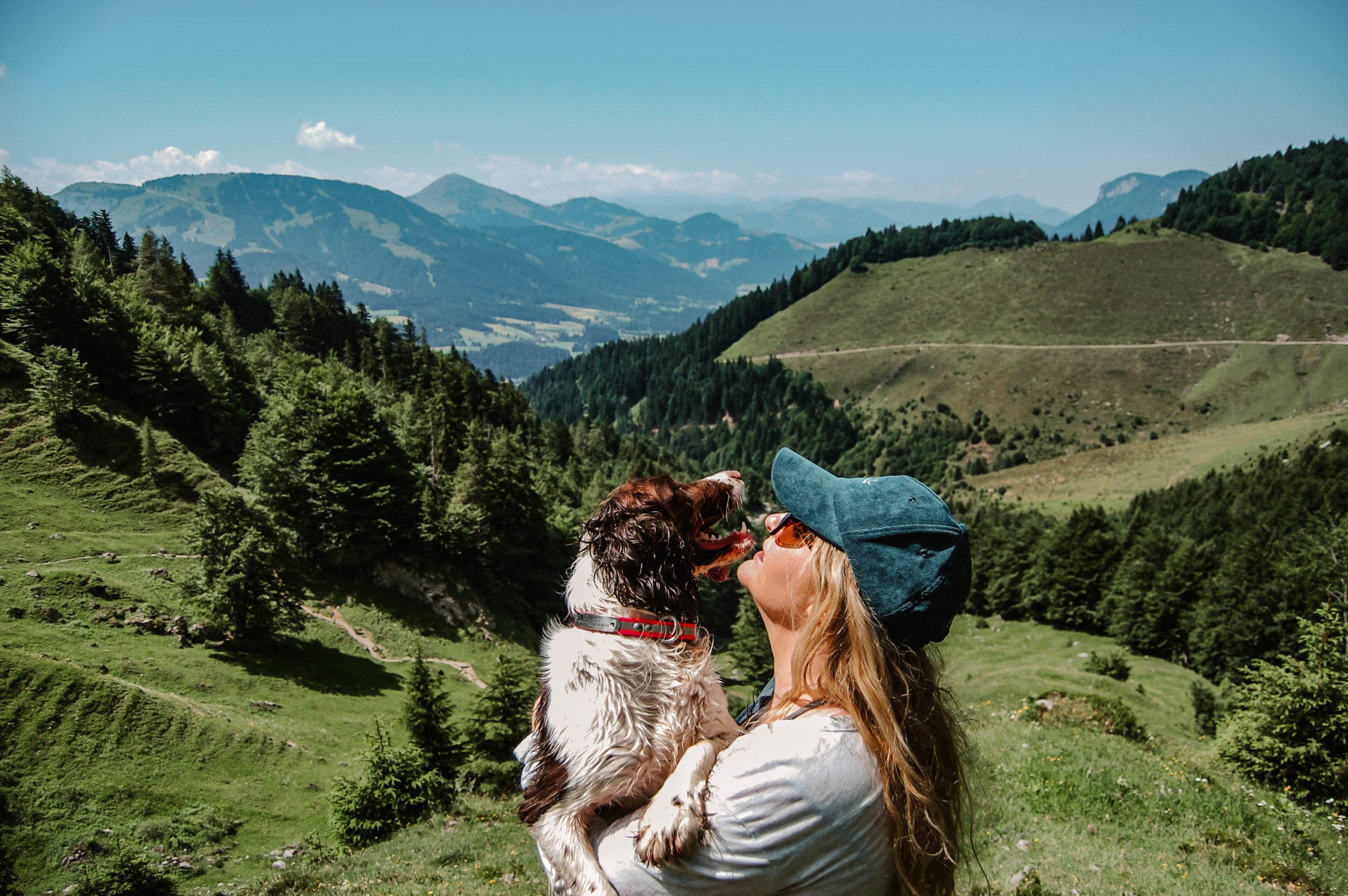
What topics should I focus on in my travel blog?
As a travel blogger, your primary goal is to showcase your adventures and experiences to your readers. While there are endless possibilities when it comes to travel blogging, there are a few key topics that you should focus on to make your blog stand out from the rest. Here are some of the most important topics to consider:
1. Destination Guides:
One of the most popular types of travel content is destination guides. Readers love to learn about the most popular attractions, landmarks, and hidden gems of a particular place. These guides should include practical tips and advice, such as the best time to visit, how to get around, and where to eat.
2. Cultural Experiences:
Travel is all about immersing yourself in different cultures. Share your experiences of interacting with locals, attending festivals, and trying local food. This can help readers understand the unique qualities of a particular place and appreciate it even more.
3. Adventure Activities:
Many travelers are looking for thrilling experiences, such as hiking, surfing, or zip-lining. Share your experiences doing these activities and provide tips on how others can do the same. This can help inspire readers to step out of their comfort zones and try something new.
4. Sustainability:
As a responsible traveler, it’s important to consider the impact you have on the environment and the communities you visit. Share tips on how to travel sustainably, such as reducing plastic waste or supporting local businesses.
5. Travel Tips:
Finally, don’t forget to share practical travel tips thatcan make your readers’ trips smoother and more enjoyable. These can include advice on packing, budgeting, and navigating unfamiliar places. By providing helpful tips, you can establish yourself as a trusted resource for your readers and keep them coming back for more.
In addition to these topics, remember to inject your own unique perspective and personality into your travel blog. Share your own stories and reflections, and provide insights that only you can offer. By doing so, you can create a loyal following of readers who are eager to hear more about your adventures. And with a growing audience, you may even be able to monetize your blog through sponsorships, affiliate marketing, or other means. So start sharing your travel experiences with the world, and who knows where your journey might take you!
Are there any tools or services I can use to help with my travel blog?
As a travel blogger, there are several tools and services that you can use to enhance your blog and make it more engaging for your readers. These tools will not only help you in creating quality content but also in promoting your blog to your target audience. Here are some of the tools and services that you can use:
1. WordPress: WordPress is a popular content management system that allows you to create and manage a blog with ease. It offers a wide range of themes, plugins and widgets that help in customizing the look and functionality of your blog. With WordPress, you can easily create blog posts, add images and videos, and schedule your content for publication.
2. Grammarly: Grammarly is a writing assistant tool that helps you to improve your writing skills. It checks your grammar and spelling, suggests alternate words and phrases, and offers tips on style and tone. This tool is particularly useful for travel bloggers who need to write engaging and error-free content to keep their readers hooked.
3. Canva: Canva is a graphic design tool that allows you to create stunning visuals for your blog. With Canva, you can create custom graphics, infographics, and social media posts. It offers a wide range of templates, images, and fonts that you can use to make your blog stand out.
4. Hootsuite: Hootsuite is a social media management tool that allows you to manage all your social media accounts from one dashboard. With Hootsuite, you can schedule your social media posts, track your social media performance, and engage with your followers. This tool is particularly useful for travel bloggers who need to promote their blog on various social media platforms.
In conclusion, starting a travel blog and making money from it requires hard work, dedication, and consistency. By following the tips and using the tools mentioned in this guide, you can create a successful travel blog that reflects your unique perspective and provides value to your readers. Remember to focus on creating quality content, engaging with your audience, and promoting your blog through various means. With time and effort, you can turn your passion for travel into a profitable venture.
FREE EBOOK! 14 Days to A Better Blog

Free, 32 Page eBook to help you grow your blog.
